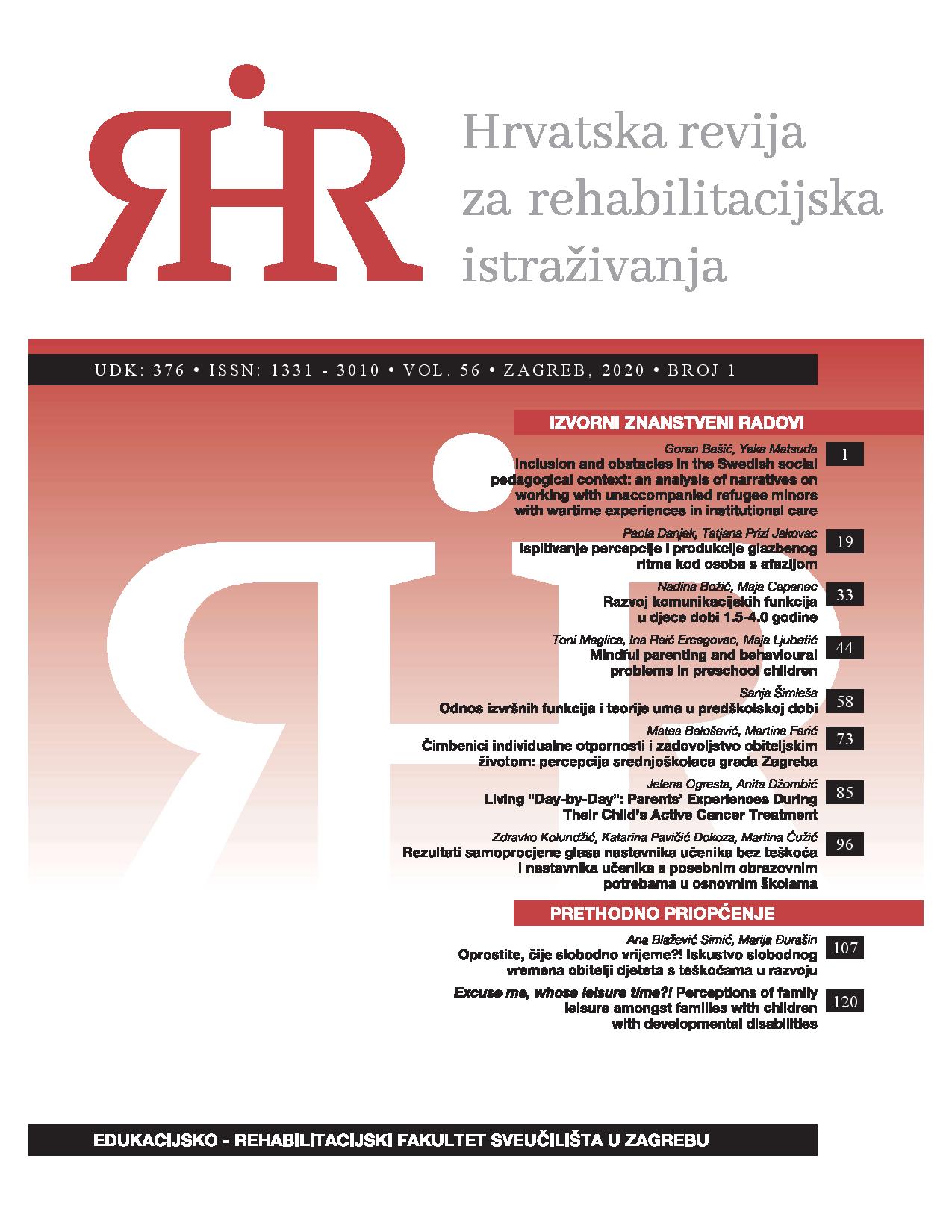Rezultati samoprocjene glasa nastavnika učenika bez teškoća i nastavnika učenika s posebnim obrazovnim potrebama u osnovnim školama
Results of voice self-assessment of the mainstream teachers and the teachers of students with special educational needs in elementary schools
Author(s): Zdravko Kolundžić, Katarina Pavičić Dokoza, Martina ĆužićSubject(s): Inclusive Education / Inclusion
Published by: Sveučilište u Zagrebu, Edukacijsko-rehabilitacijski fakultet
Keywords: VHI; voice disorders; teachers; students with special educational needs;
Summary/Abstract: Voice skills are extremely important for people who use their voice as a means of everyday work, especially for teachers who stand out as a subgroup of voice professionals who are exposed to many risk factors for voice disorders. Little is known about the extent to which the specificities of the students, in terms of the additional demands that their teaching puts on the teacher, can negatively affect the voice abilities of the teacher. Here we mainly consider the difference in the the manner of vocal performance of teachers working in mainstream schools as compared to vocal performances of those working in schools for special educational needs. In this study, two groups were examined: teachers working in a regular primary school (N = 40) and teachers conducting a regular program in special conditions with students who have communication, language, speech and/or hearing impairment (N = 30). The aim was to examine self-assessment of voice difficulties between two groups of teachers on VHI (Voice Handicap Index) and to identify the possible predictivity of chronological age, years of working experience, gender and positive medical history on voice disorders on the results of self-assessment. Results show that statistically significant differences between two groups of teachers exist on the VHI subscale emotionally in terms of poor results of teachers of students without difficulties, whereas on the other two subscales and the overall result there are no significant differences. Regression analysis confirms the predictivity of positive medical history on VHI results. Results of this research confirm less occurrence of voice disorder within the group of teachers who work with students with specific educational disorders. Less prevalence and incidence of voice disorders is probably a consequence of a better knowledge of voice production and hygiene, a smaller number of students and the use of electroacoustical equipment during the teaching process. However, given the small sample of respondents and only the results of the research participants' self assessment, future research should include a larger sample and objective variables in order to verify the results of this research and its implications.
Journal: Hrvatska revija za rehabilitacijska istraživanja
- Issue Year: 56/2020
- Issue No: 1
- Page Range: 96-106
- Page Count: 11
- Language: Croatian

